World IPv6 Day took place on 8 June 2011. The RIPE NCC did a number of measurements both before and during World IPv6 Day. We've done an initial analysis of the data and would like to share our first impressions and results with you.
In generally things worked fine. There were a few occasions where things didn't work as expected, but these were quickly fixed. This article will provide an overview of what we measured. We'll go into more detail in additional articles that we will publish over the next few weeks.
IPv6 Eye Chart
The IPv6 Eye Chart performs tests of connectivity to websites by fetching an image from that website. This can be used to see how your connectivity to dual-stacked websites is compared to websites that are not dual-stacked. If you can't reach all dual-stacked websites, something is broken with your connectivity. The problem is very likely close to you (your browser or local network setup) and you are advised to fix this. It might be more difficult to fix them problem if you can reach some dual-stacked sites, but not all, since this partial reachability problem is more likely to be caused by networks beyond your local network. The IPv6 Eye Chart can be used to diagnose these type of problems. We also used the page to collect statistics in the background. In Figure 1 below, you can see how the IPv6 Eye Chart looked when the user didn't encounter any problems reaching dual-stacked websites from his or her location.
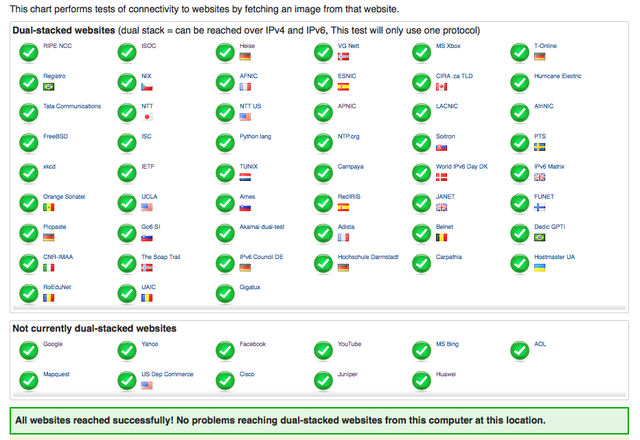
Figure 1: The IPv6 Eye Chart showing no problems reaching dual-stacked websites
The IPv6 Eye Chart page was accessed 21,000 times on 7 June, and 42,000 times on 8 June. This prompted discussions on various public mailinglists like v6-ops . People used the page to fixpartial reachability issues before and during World IPv6 Day. We heard that people found this tool useful, even outside of the scope of World IPv6 Day, so we plan to keep the IPv6 Eye Chart running for some time. If you have specific ideas or suggestions how the page can be improved, please let us know (see below).
We have not analysed the data in detail yet, but we will publish more results on RIPE Labs soon. If there is enough demand we can anonymise the data we collected and make it available to interested parties.
Active measurements of World IPv6 Day participants
In cooperation with CAIDA , the RIPE NCC took active measurements of World IPv6 Day participants before, during and after the day. We selected 53 participants out of the ISOC list of participants and other sources such as the IPv6 Eye Chart and performed periodical A and AAAA DNS lookups and HTTP fetches from 40 servers worldwide. For HTTP, we fetched data over IPv4 and IPv6. These provide important control points: if HTTP or DNS lookup fail on both IPv4 and IPv6, the problem is less likely to be related to switching on IPv6. We also performed ping/ping6 and traceroute/traceroute6 queries to the same set of World IPv6 Day participants.

Figure 2: Chart showing the visibility of DNS AAAA records of World IPv6 Day participants
As shown in Figure 2, most of World IPv6 Day participants we monitored started announcing DNS AAAA records (marked in light green) around midnight UTC on 8 June, but some started earlier, some even days earlier which we interpret as a sign of confidence that dual-stacking wouldn't cause significant problems.
Some participants retracted the AAAA records again around midnight UTC on 9 June, while others continued serving both A and AAAA records. Many participants are still dual-stacked.
Although we did see some glitches, all but one of the World IPv6 Day participants that we monitored had no significant problems. Most of the unexpected behaviour we saw was typically resolved quickly. We'll describe our observations in more detail in a future article.
We also compared response-times and reliability of participating websites between IPv4 and IPv6. We observed no significant differences at all between the two during the course of the day.
More information about these measurements can be found on our World IPv6 Day measurements page . We're in the process of cleaning up the data and doing further analysis on this. Our plan is to release the measurement data to interested parties in the near future.
6to4 relay performance
In cooperation with BBN Technologies and the University of Applied Sciences, Amsterdam , we measured 6to4 relays. From looking at the measurement data, it was clear that the 6to4 relays that were measured didn't become overloaded on World IPv6 Day as was feared by some.
Conclusion
We received lots of positive feedback on our activities both from parties that regularly participate in RIPE activities, and also from parties we don't see or hear from that often. We would like to hear what you thought of this activity, and specifically what the RIPE NCC should do at similar events. Do you want us to measure more things or maybe different things?
Please comment below, or send your comments to mat-wg@ripe.net .

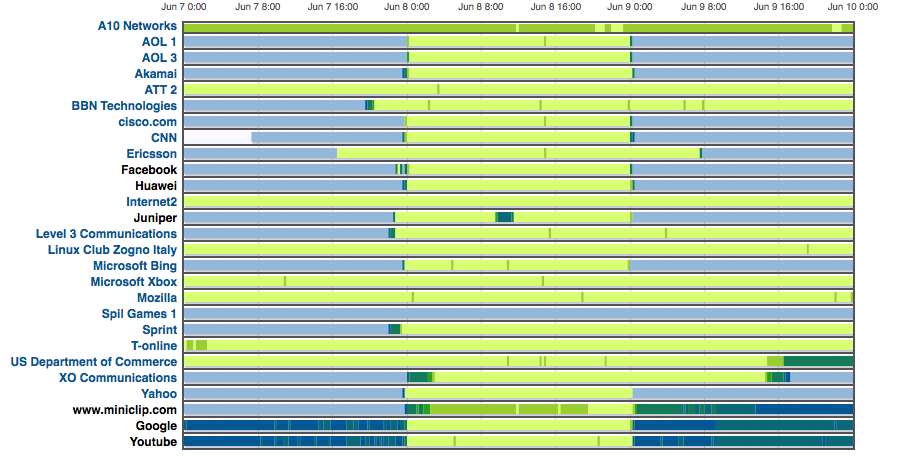


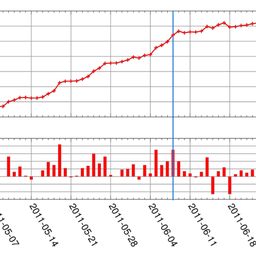
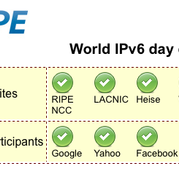
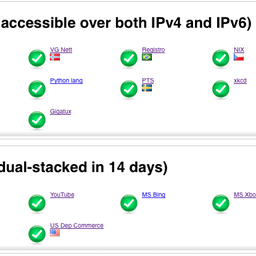



Comments 2
The comments section is closed for articles published more than a year ago. If you'd like to inform us of any issues, please contact us.
Anonymous •
Good work!
Anonymous •
Thanks for the good data, much appreciated!